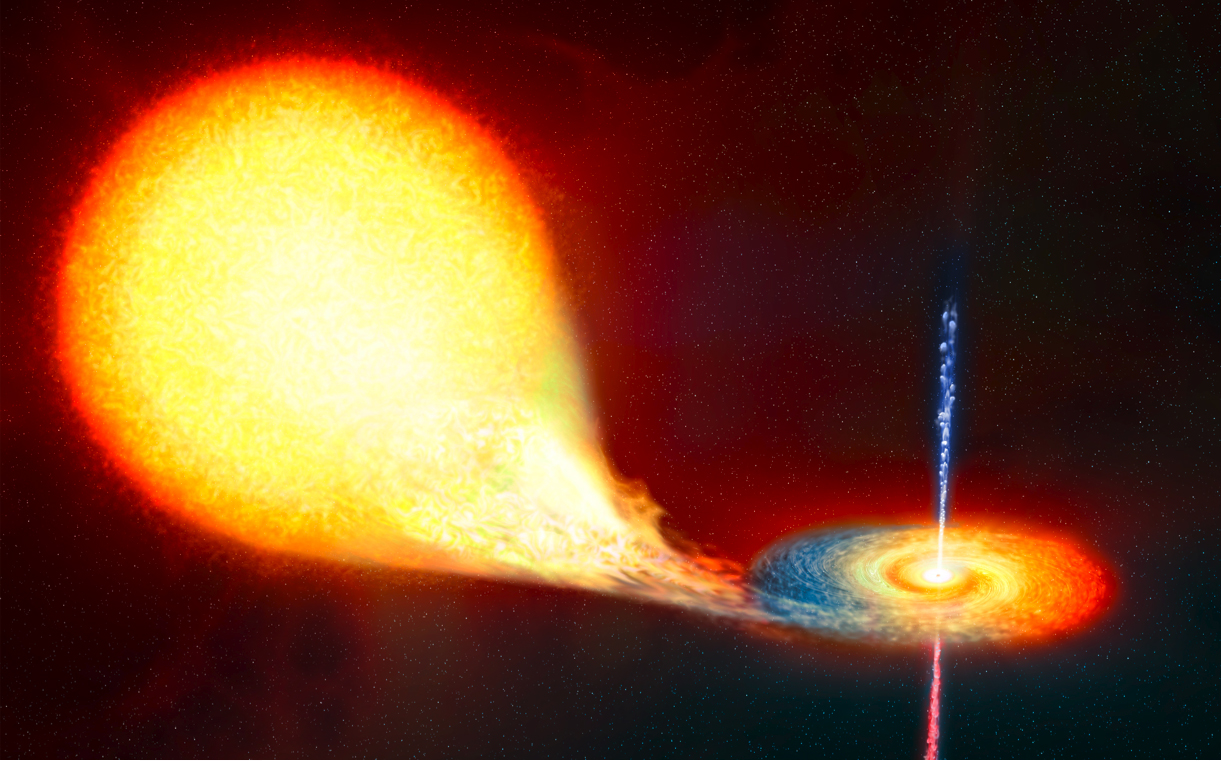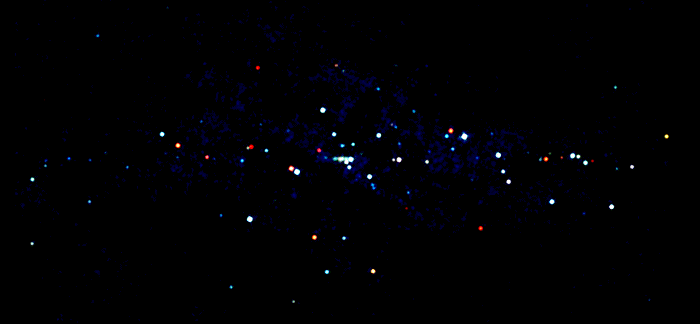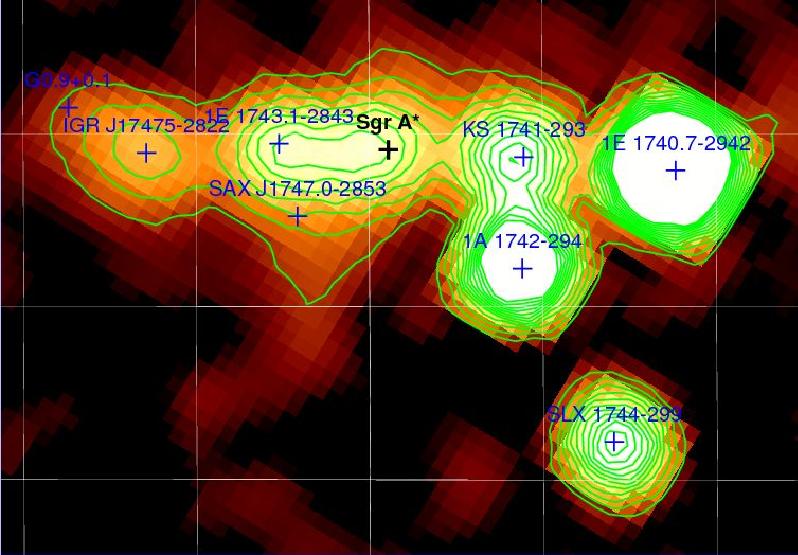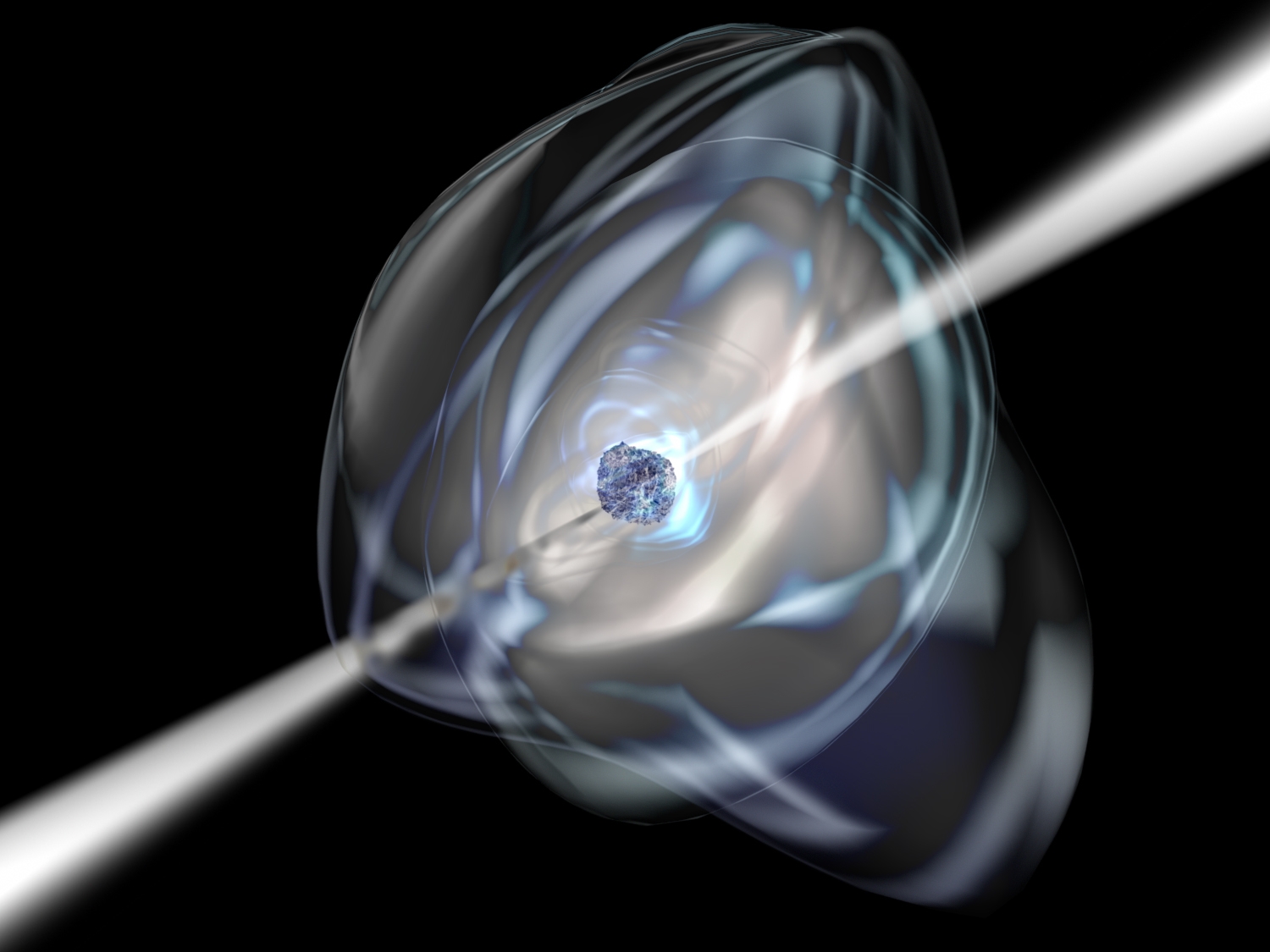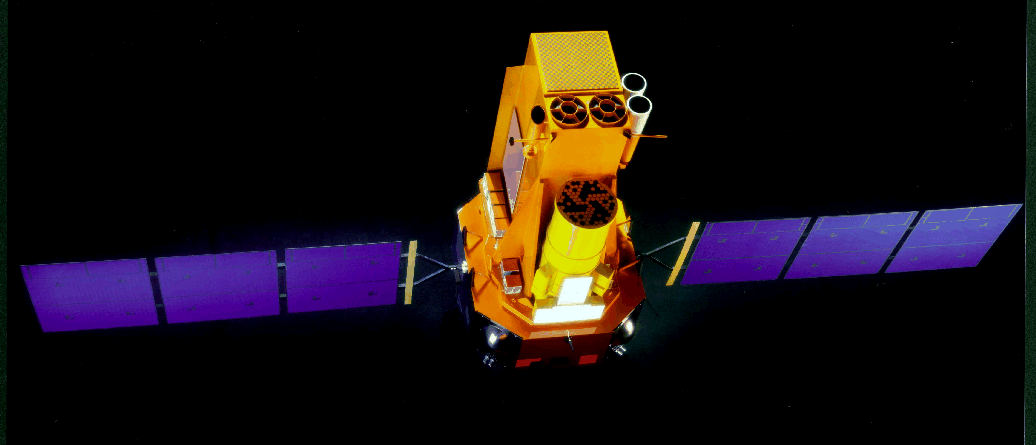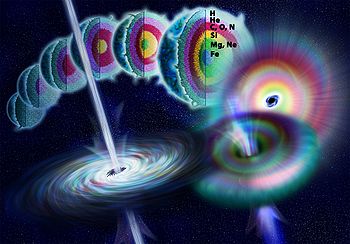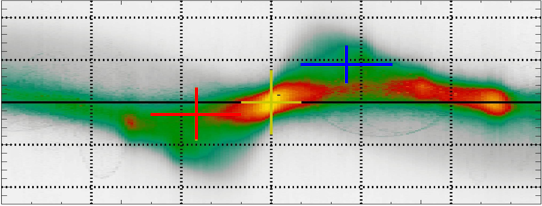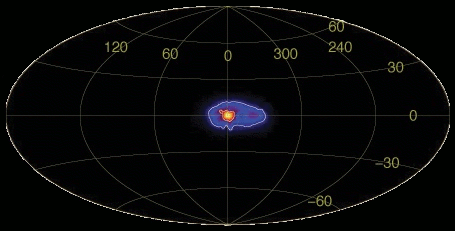Science - INTEGRAL
Scientific Objectives & Achievements
Gamma-ray astronomy explores the most energetic phenomena that occur in nature and addresses some of the most fundamental problems in physics and astrophysics. It embraces a great variety of gamma-ray continuum and gamma-ray line processes: nuclear excitation, radioactivity, positron annihilation and Compton scattering; and an even greater diversity of astrophysical objects and phenomena: nucleosynthesis, nova and supernova explosions, the interstellar medium, cosmic-ray interactions and sources, neutron stars, black holes, gamma-ray bursts, active galactic nuclei and the cosmic gamma-ray background. Not only do gamma-rays allow us to see deeper into these objects, but the bulk of the power radiated by them is often at gamma-ray energies.
The scientific goals of INTEGRAL are addressed through the use of high resolution spectroscopy with fine imaging and accurate positioning of celestial sources in the gamma-ray domain. Fine spectroscopy over the entire energy range permits spectral features to be uniquely identified and line profiles to be determined for physical studies of the source region. The fine imaging capability of INTEGRAL within a large field of view permits the accurate location and hence identification of the gamma-ray emitting objects with counterparts at other wavelengths, enables extended regions to be distinguished from point sources and provides considerable serendipitous science which is very important for an observatory-class mission.
Some of the topics addressed by Integral are:
- Compact Objects: White Dwarfs, Neutron Stars, Black Hole Candidates, High Energy Transients
- Extragalactic Astronomy: Galaxies, Clusters, AGN, Seyferts, Blazars, Cosmic Diffuse Background
- Nucleosynthesis Studies: Hydrostatic Nucleosynthesis (AGB, WR Stars), Explosive Nucleosynthesis (Supernovae, Novae)
- The Galactic Centre: Sgr A*, diffuse emission, monitoring the Galactic Centre and Bulge
- Gamma-Ray Bursts: Alerts, GRB properties
- Classification and Identification of High Energy Sources: Source Catalogues, Identifying Gamma-Ray Objects
- Graviational Waves
- PLUS: Unexpected Discoveries (Obscured sources, Supergiant Fast X-ray Transients, hard tails from magnetars)
See also the INTEGRAL Press Releases.
- Removed a total of (12) style text-align:center;
- Removed a total of (2) style text-align:justify;
- Removed a total of (2) align=left.
- Removed a total of (1) border attribute.
- Removed a total of (1) cellpadding attribute.
- Removed a total of (1) cellspacing attribute.








































 Sign in
Sign in
 Science & Technology
Science & Technology
